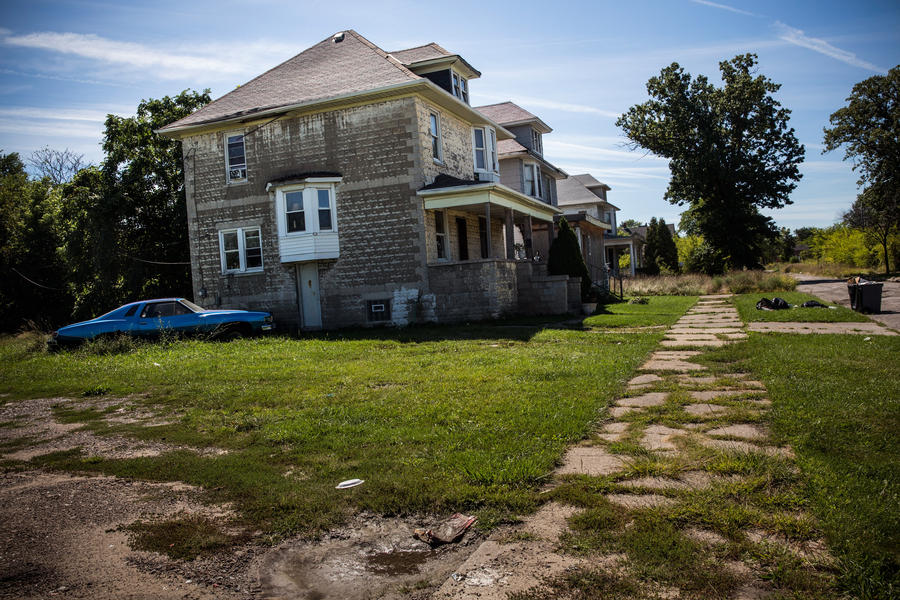It will cost almost $2 billion to rid Detroit of urban blight
Andrew Burton/Getty Images


Detroit has plans to raise and spend about $450 million to tear down blighted buildings — houses and other structures that are structurally unsound, damaged, or being used as trash-dumping ground. A new report released Tuesday says that Detroit will have to spend almost double that to rid itself of blight, and quickly, before it drags down more neighborhoods and the once-great, now-bankrupt Motor City.
The Detroit Blight Removal Task Force, convened by President Obama last fall, based its report on a massive, detailed survey of Detroit's 377,000 parcels of land, concluding that the city should quickly demolish about 40,000 of them and consider scrapping or restoring more than 30,000 more. That will cost up to $850 million, the report estimates, and it will cost up to $1 billion more to save or dismantle the city's almost 600 giant factories.
"Blight sucks the soul out of anyone who gets near it," task force leader Dan Gilbert told The New York Times on Tuesday. Even if Detroit secures the funding to rid itself of the blight, though, the 300-page report [PDF] offers no guidance on what to do with the empty lots that replace it, not to mention the thousands already spread across Detroit. The New York Times has a map laying out the empty lots and blighted properties, and a video of what blight looks like on one Detroit street.
The Week
Escape your echo chamber. Get the facts behind the news, plus analysis from multiple perspectives.

Sign up for The Week's Free Newsletters
From our morning news briefing to a weekly Good News Newsletter, get the best of The Week delivered directly to your inbox.
From our morning news briefing to a weekly Good News Newsletter, get the best of The Week delivered directly to your inbox.
A free daily email with the biggest news stories of the day – and the best features from TheWeek.com
Peter has worked as a news and culture writer and editor at The Week since the site's launch in 2008. He covers politics, world affairs, religion and cultural currents. His journalism career began as a copy editor at a financial newswire and has included editorial positions at The New York Times Magazine, Facts on File, and Oregon State University.
-
 Nobody seems surprised Wagner's Prigozhin died under suspicious circumstances
Nobody seems surprised Wagner's Prigozhin died under suspicious circumstancesSpeed Read
-
 Western mountain climbers allegedly left Pakistani porter to die on K2
Western mountain climbers allegedly left Pakistani porter to die on K2Speed Read
-
 'Circular saw blades' divide controversial Rio Grande buoys installed by Texas governor
'Circular saw blades' divide controversial Rio Grande buoys installed by Texas governorSpeed Read
-
 Los Angeles city workers stage 1-day walkout over labor conditions
Los Angeles city workers stage 1-day walkout over labor conditionsSpeed Read
-
 Mega Millions jackpot climbs to an estimated $1.55 billion
Mega Millions jackpot climbs to an estimated $1.55 billionSpeed Read
-
 Bangladesh dealing with worst dengue fever outbreak on record
Bangladesh dealing with worst dengue fever outbreak on recordSpeed Read
-
 Glacial outburst flooding in Juneau destroys homes
Glacial outburst flooding in Juneau destroys homesSpeed Read
-
 Scotland seeking 'monster hunters' to search for fabled Loch Ness creature
Scotland seeking 'monster hunters' to search for fabled Loch Ness creatureSpeed Read



